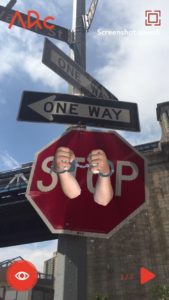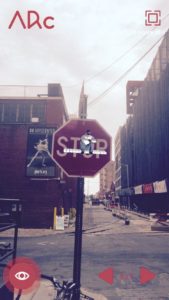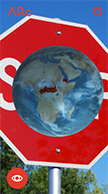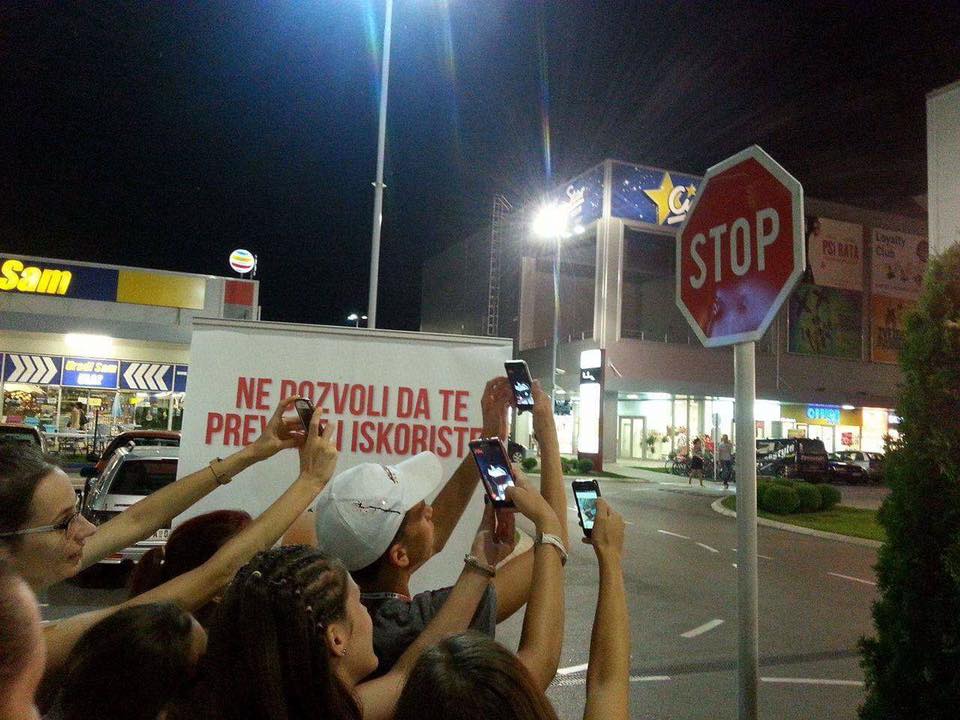As part of the Worl d Day Against Trafficking in Persons on July 30, we released our latest augmented reality story, “#STOPtrafficking2016.”
d Day Against Trafficking in Persons on July 30, we released our latest augmented reality story, “#STOPtrafficking2016.”
The AR experience uses traffic stop signs as a trigger. Users can go up to a real world stop sign or a graphic of one to view the story, which explores human trafficking through the stories of three people affected by it.
Below, Empathetic Media founder Dan Archer discusses how he met Hari, a Nepalese man who was trafficked to work in a brick kiln, and why he thinks it is important to raise awareness about modern human slavery.
How did you end up working in Nepal?

The 3D model of Hari in “#STOPtrafficking2016.”
I first went to Nepal having met a colleague of mine, Madhu Acharya, who I met during a Knight Fellowship at Stanford. He said my work could be relevant and useful in a country like Nepal where literacy rates are lower and trafficking had such a high incidence. So working together with him, we reached out to different local organizations, like the Child Development Society (CDS) and initiated a Kickstarter. So I went Kathmandu at the end of 2012, and was there for most of 2013. We were interviewing a whole array of different survivors of human trafficking, in the brick kiln industry, massage parlors, children who had been pulled into domestic servitude and migrant workers who had been used in the Gulf. We focused a lot on families in debt bondage, and brick kiln workers figure highly amongst them.
I met Hari, when I went with someone from Child Development Society down to the brick kilns in Bhakcapur, which is about half an hour drive east from Kathmandu. You see chimneys spring up out of the countryside when you arrive. Workers are largely farmers, who cannot work all year round, so they spend six months of the year making bricks. Bricks are made with piles of mud, treated with water, slapping it into simple wooden frames and let them dry in the sun. Families are paida pitiful amount by the brick. Typically what happens is a broker or a trafficker, what’s called a naike and dalal, will pay them in advance for the season’s work and then they’ll need to use that money to get from their village to the place that’s set up and deal with logistical issues. Often, by the time they get there, the cost is so expensive that the job that they do will never be enough to pay them. So they’re stuck in this external cycle.
Why do you think it is important to inform people about human trafficking, specifically through augmented reality? I thought this story was important as a way to bring an issue that most people (in the West at least) associate with something so distant closer to home. We had seen the impact and uptake in the technology behind Pokémon Go and experimented with using a more unconventional trigger in the form of a traffic sign: something that people pass every day but wouldn’t associate with a way of unlocking content. We also wanted to make it social, which was possible through our partnership with the ATTeam in Serbia who had set up a walk through Pancevo where participants would follow the route of the UN heart logo for the world anti-trafficking day.
What goal do you have with the project? Our goal, as ever, is to foster a wider sense of engagement in our audiences and encourage them to dig deeper beyond surface level interaction with a story, especially stories that carry a powerful social justice or human rights message.

